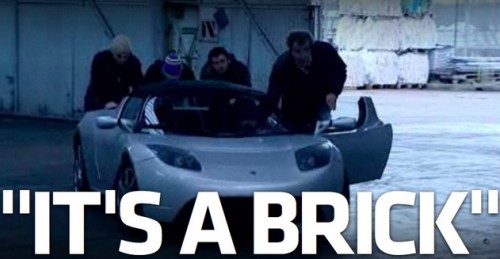
By David Ponce
So this story is a little shocking. It turns out that if you let your Tesla’s battery fully discharge, it becomes essentially destroyed. At that point, the car is one large brick. Nothing will work: you won’t even be able to turn the wheels so it can be towed conventionally. But it gets worse, much worse. If this happens, Tesla charges you $40,000 or so to get a new set of batteries. “Oh, but the waranty should cover it!” you’ll say. Nope, it specifically doesn’t. “Ok then, insurance will take care of it.” Wrong again. Insurance companies specifically do not cover this. Let the batteries go empty = $40,000 out of your account. “Ok, well, shoot… but maybe Tesla will let me finance that…” Wrong. Again. You pay in full, or you’ll be asked to get your expensive brick out of the dealership.
For something like this to happen isn’t that hard. Drive the car around so that it’s at, say, 50% charge and leave it at the airport for a week or so. Or park it in your own garage, but use an extension cord (as opposed to proper charging cables). Heck, you can think of a number of ways this could happen. And happen it did, to at least 5 devastated clients.
Tesla at the moment is in a bit of a predicament as it has to walk the fine line between aggressively warning its customers of the potential danger, and talking about it too much and risk spooking buyers off. And it’s even doing some potentially shady things (like remotely activating a GPS module in order to physically go plug a dying car in) to do what looks like some damage control. In official comments on the issue, representatives liken the problem to “making regular oil changes” and “maintaining a proper level of care”. Batteries, similarly, should never be allowed to fully discharge.
Well, we don’t know. Maybe this is a new class of problems that a new class of vehicles brings with it. Whatever the case, you should read the longer article at the link below. It’s pretty interesting.










